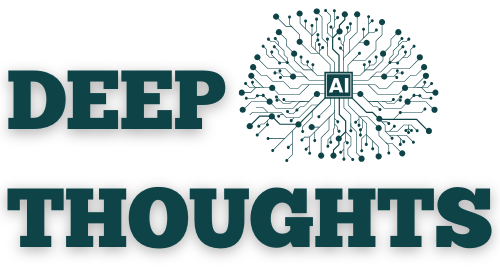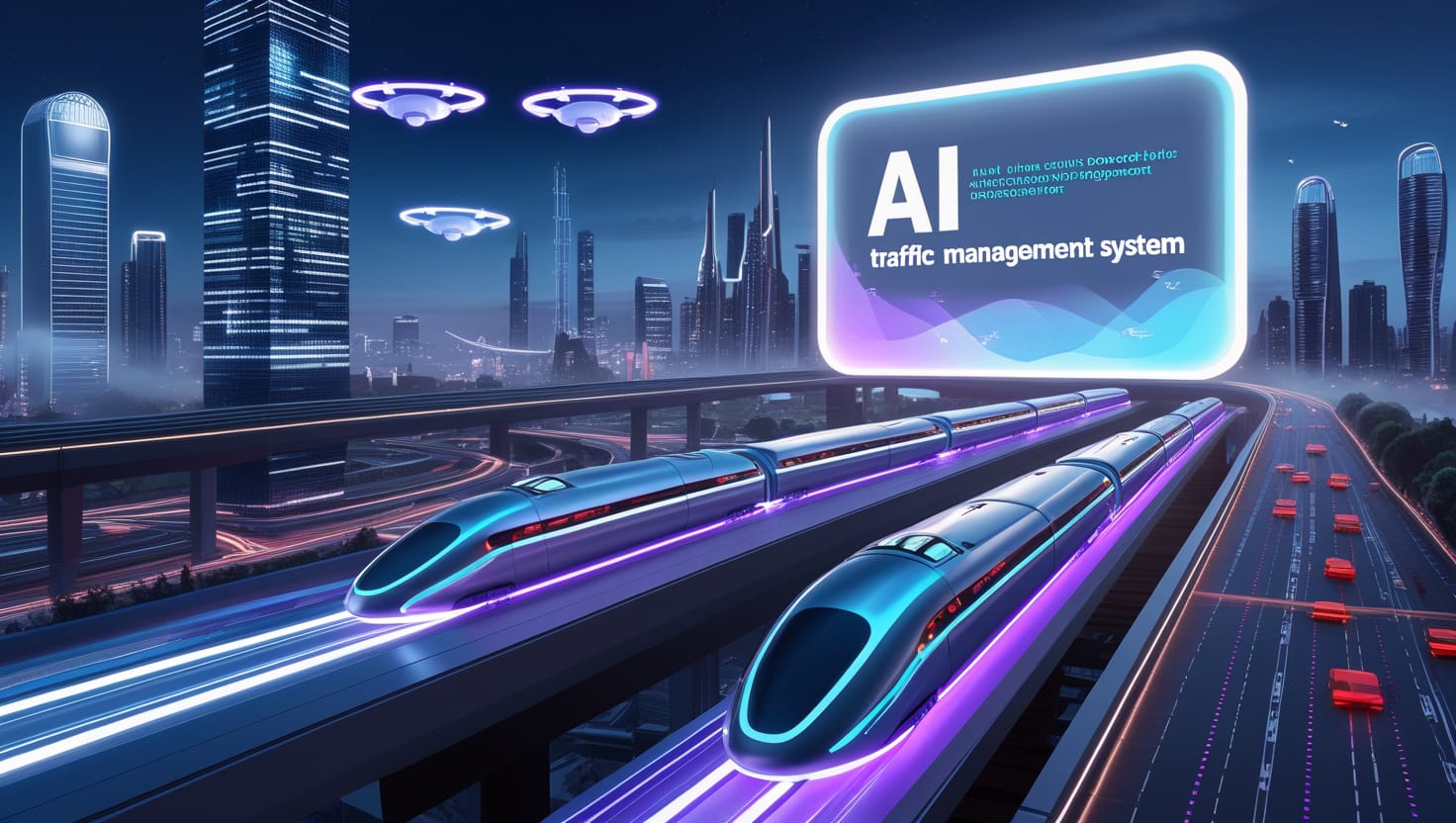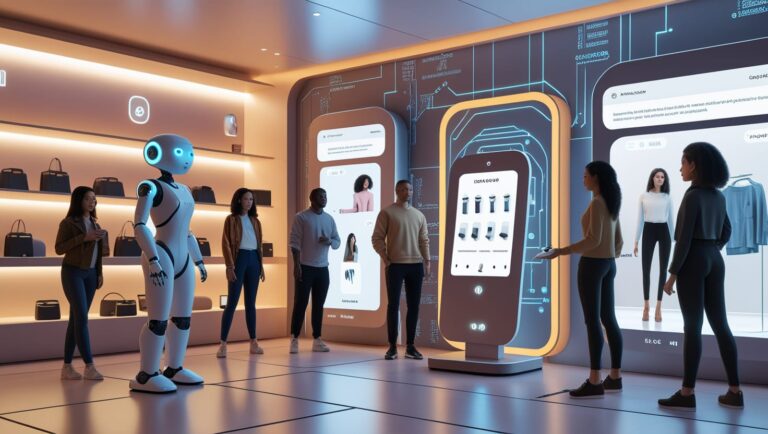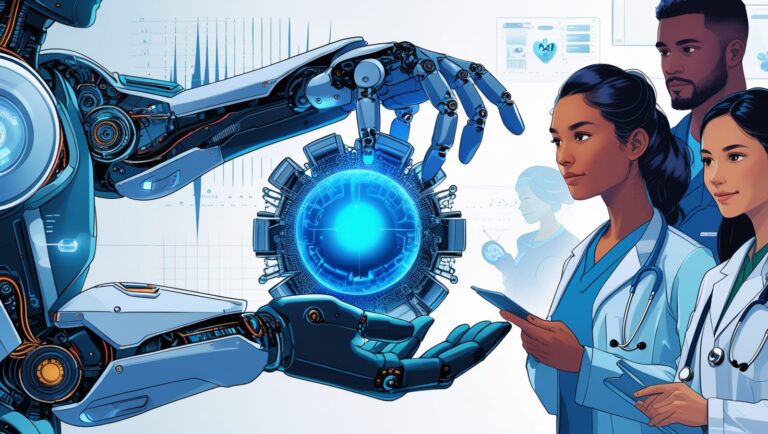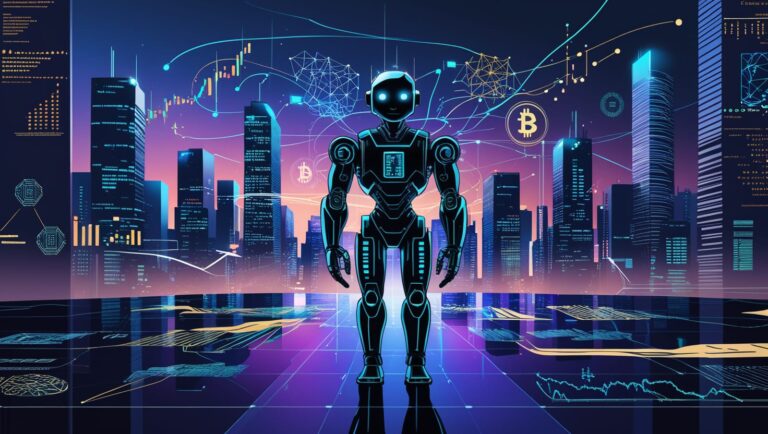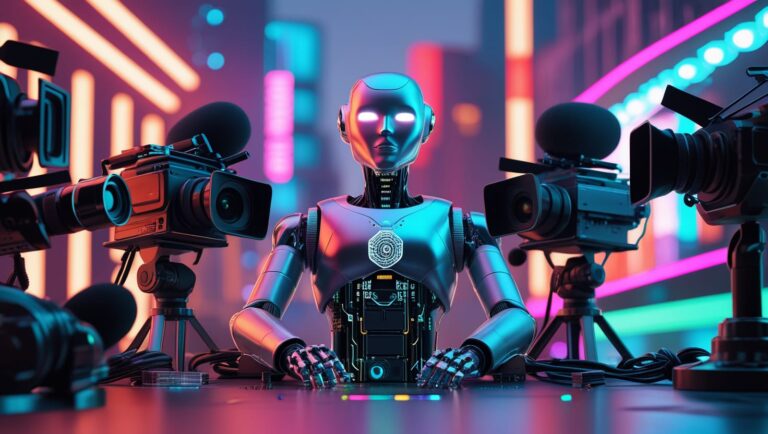Shaping the Future of Mobility
Artificial Intelligence (AI) is rapidly transforming the transportation sector, with technology playing a central role in optimizing how goods and people move around the world. From self-driving cars to intelligent traffic management systems, AI is helping the transportation industry become safer, more efficient, and more sustainable. In this article, we will explore the various applications of AI in transportation, its benefits, and the challenges it faces in reshaping how we travel.
What is AI in Transportation?
AI in transportation refers to the use of machine learning, computer vision, data analytics, and other AI technologies to improve how transportation systems operate. AI enables vehicles, infrastructure, and logistics systems to process vast amounts of data, make real-time decisions, and optimize movement and routes.
By analyzing traffic patterns, weather conditions, road safety data, and vehicle performance, AI can enhance the efficiency of transportation systems and reduce human error. AI is also driving the development of autonomous vehicles, smart cities, and better logistics solutions.
Key Applications of AI in Transportation
AI is already being applied across many different areas of transportation. Below are some of the most impactful applications that are shaping the future of the industry:
1. Autonomous Vehicles (Self-Driving Cars)
One of the most well-known applications of AI in transportation is autonomous vehicles, including self-driving cars, trucks, and delivery vehicles. AI systems in autonomous vehicles use sensors, cameras, radar, and machine learning algorithms to interpret the vehicle’s surroundings and make driving decisions without human intervention.
AI enables these vehicles to detect objects, interpret road signs, avoid collisions, and make real-time decisions in complex environments. Companies like Tesla, Waymo, and Uber are at the forefront of developing autonomous driving technology, which promises to make transportation safer and more efficient by reducing human errors and traffic accidents.
Example: Waymo, a subsidiary of Alphabet (Google’s parent company), has been testing autonomous cars for years, using AI to enable its vehicles to navigate complex city environments. These self-driving cars use AI to understand traffic patterns, pedestrians, cyclists, and other road users, while also constantly improving their driving performance through machine learning.
2. Intelligent Traffic Management Systems
AI is being used to optimize traffic flow in cities, reducing congestion and improving safety. AI-powered traffic management systems can monitor real-time traffic data, adjust traffic light timings, and predict congestion patterns. By analyzing data from sensors, cameras, and GPS devices, AI can anticipate traffic conditions and provide solutions to minimize delays.
Smart traffic systems can also adapt to changing conditions, such as accidents, road closures, or weather events, by rerouting traffic and adjusting signal timings dynamically. These systems help reduce overall travel time, lower fuel consumption, and decrease the carbon footprint of vehicles stuck in traffic.
Example: In cities like Los Angeles and Barcelona, AI-powered traffic management systems are being implemented to optimize traffic flow and reduce congestion. These systems analyze real-time data and adjust traffic signals and routes to improve traffic movement and reduce delays.
3. Predictive Maintenance for Vehicles and Infrastructure
AI is revolutionizing how we maintain vehicles and transportation infrastructure. Predictive maintenance uses AI to analyze data from sensors on vehicles and infrastructure to predict when maintenance is required, minimizing downtime and preventing costly breakdowns.
AI algorithms can monitor the health of vehicles, detecting signs of wear and tear, engine issues, or tire problems. In the case of public transportation systems, AI can predict when trains, buses, or other infrastructure components need repairs or upgrades, leading to reduced service disruptions.
Example: Airlines like Delta Airlines use AI to monitor aircraft conditions and detect potential mechanical failures before they occur. This approach has helped airlines reduce maintenance costs and improve safety by addressing issues before they become critical.
4. Autonomous Delivery and Logistics
AI is transforming the logistics and delivery sector, with autonomous vehicles and drones playing a major role in the future of goods transportation. Self-driving trucks, drones, and delivery robots can automate the movement of goods, speeding up the delivery process, reducing human labor costs, and increasing efficiency.
In addition to vehicles, AI-powered systems are used to optimize delivery routes, monitor supply chain operations, and manage inventory. These systems can analyze factors like weather, traffic conditions, and demand to ensure the fastest and most cost-effective routes are taken.
Example: Amazon’s Prime Air service is exploring the use of drones for autonomous package delivery. By leveraging AI and machine learning, Amazon aims to reduce delivery times significantly, bringing packages to customers’ doorsteps in as little as 30 minutes.
5. Mobility-as-a-Service (MaaS)
Mobility-as-a-Service (MaaS) is a concept that involves integrating various transportation modes into a single, accessible service. AI plays a central role in MaaS by optimizing trip planning and creating personalized transportation experiences. AI can analyze real-time data on public transportation, ride-sharing, cycling, and walking options to provide users with the most efficient and cost-effective routes.
With the help of AI, MaaS platforms can offer users seamless travel experiences, recommending the best modes of transport based on their preferences, travel time, and budget. Users can plan, book, and pay for multiple modes of transport through a single app or service.
Example: Citymapper, a popular transportation app, uses AI to combine various modes of transport, such as buses, trains, and taxis, into a single trip-planning experience for users. The app suggests the fastest or cheapest routes depending on the user’s needs, streamlining their travel experience.
6. Smart Parking Solutions
AI is also addressing the challenge of parking in congested urban areas. Smart parking solutions powered by AI can monitor parking availability in real-time, helping drivers find open spaces quickly and reducing the time spent searching for parking. These systems can use sensors, cameras, and machine learning algorithms to identify available spots and guide drivers to them.
In addition to reducing parking-related stress for drivers, AI-based parking systems can help optimize the overall use of parking spaces in cities, reducing traffic congestion and carbon emissions.
Example: In cities like San Francisco, AI-powered parking apps like ParkMobile allow users to find and reserve parking spots in real-time, helping to reduce the need for circling around looking for parking.
7. AI in Public Transport Systems
AI is also improving the efficiency and reliability of public transport systems. From bus and train scheduling to route planning and capacity management, AI is helping transportation authorities optimize their operations. AI-powered systems can analyze data from various sources, including passenger counts, weather conditions, and traffic information, to adjust routes and schedules in real time.
AI can also enhance the passenger experience by offering real-time information on bus/train arrivals, delays, and service interruptions. This creates a more efficient and responsive public transportation system that better serves commuters.
Example: In Singapore, the Land Transport Authority has introduced AI-based systems that optimize bus routes, making the public transport system more efficient and responsive to real-time passenger demand.
Benefits of AI in Transportation
The integration of AI into transportation brings numerous benefits:
- Safety: AI can significantly reduce human errors, which are the leading cause of traffic accidents. Self-driving cars and intelligent traffic management systems enhance safety by making data-driven decisions and avoiding common driving mistakes.
- Efficiency: AI streamlines logistics and transportation networks, optimizing routes, reducing delays, and improving the overall efficiency of travel.
- Cost Savings: AI technologies like predictive maintenance, autonomous vehicles, and intelligent traffic systems help reduce operational costs by minimizing breakdowns, maximizing fuel efficiency, and lowering traffic-related expenses.
- Environmental Impact: By optimizing routes, reducing congestion, and improving fuel efficiency, AI contributes to the reduction of carbon emissions in the transportation sector.
- Enhanced Customer Experience: AI enhances the travel experience by providing real-time data, personalized recommendations, and seamless connectivity between various transportation modes.
Challenges of AI in Transportation
While AI presents vast opportunities, its implementation in transportation faces several challenges:
- Regulation and Safety Standards: Autonomous vehicles and AI-driven systems must comply with safety regulations and legal frameworks that vary across regions. Establishing universal safety standards for AI-powered transportation is crucial.
- Data Privacy and Security: With the use of AI, vast amounts of data about passengers, vehicles, and infrastructure are collected. Protecting this data from cyberattacks and ensuring user privacy is a significant challenge.
- Public Acceptance and Trust: The adoption of autonomous vehicles and AI-powered transportation systems requires public trust. Many people remain skeptical about AI-driven technologies, especially self-driving cars, due to concerns about safety and reliability.
- Infrastructure Compatibility: Integrating AI technologies into existing transportation infrastructure can be complex and costly. Modernizing infrastructure to support autonomous vehicles and intelligent traffic systems requires significant investment and coordination between governments and private companies.
The Future of AI in Transportation
The future of AI in transportation is incredibly exciting, with potential advancements that could change how we travel on a global scale. We can expect to see the continued growth of autonomous vehicles, smart traffic management, and AI-driven logistics. As AI technologies become more sophisticated, the transportation sector will become safer, more sustainable, and more efficient.
In the coming years, we may also see the integration of AI with emerging technologies like 5G, Internet of Things (IoT), and blockchain, further enhancing the capabilities of transportation systems and creating a more connected and responsive global mobility ecosystem.
Conclusion
AI is already playing a transformative role in the transportation industry, offering new opportunities for safer, more efficient, and sustainable travel. From self-driving cars to intelligent traffic management and predictive maintenance, AI technologies are revolutionizing how we move people and goods.
While challenges remain in terms of regulation, safety, and public acceptance, the future of AI in transportation looks bright. As technology continues to advance, we can expect AI to shape the future of mobility in ways that were once considered science fiction, creating smarter, greener, and more connected transportation systems around the world.
